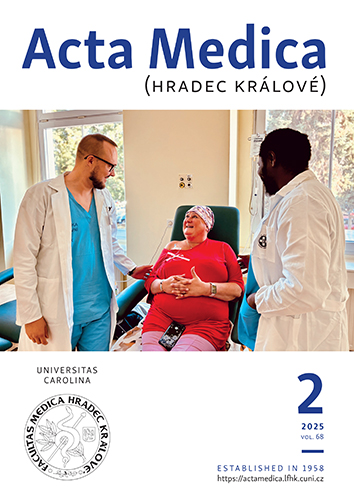ACTA MEDICA, Vol 57 No 2 (2014), 62–67
The Chernobyl Accident, the Male to Female Ratio at Birth and Birth Rates
Viktor Grech
published online: 09. 02. 2015
abstract
Introduction: The male:female ratio at birth (male births divided by total live births – M/T) has been shown to increase in response to ionizing radiation due to gender-biased fetal loss, with excess female loss. M/T rose sharply in 1987 in central-eastern European countries following the Chernobyl accident in 1986. This study analyses M/T and births for the former Soviet Republics and for the countries most contaminated by the event. Methods: Annual birth data was obtained from the World Health Organisation. The countries with the highest exposure levels (by 137Cs) were identified from an official publication of the International Atomic Energy Agency. All of the former Soviet states were also analysed and the periods before and after 1986 were compared. Results: Except for the Baltic States, all regions in the former USSR showed a significant rise in M/T from 1986. There were significant rises in M/T in the three most exposed (Belarus, Ukraine and the Russian Federation). The birth deficit in the post-Soviet states for the ten years following Chernobyl was estimated at 2,072,666, of which 1,087,924 are accounted by Belarus and Ukraine alone. Discussion: Chernobyl has resulted in the loss of millions of births, a process that has involved female even more than male fetuses. This is another and oft neglected consequence of widespread population radiation contamination.
keywords: USSR; Birth Rate/*trends; Chernobyl Nuclear Accident; Infant; Newborn Sex Ratio; Radiation; Ionizing

The Chernobyl Accident, the Male to Female Ratio at Birth and Birth Rates is licensed under a Creative Commons Attribution 4.0 International License.
210 x 297 mm
periodicity: 4 x per year
print price: 150 czk
ISSN: 1211-4286
E-ISSN: 1805-9694
